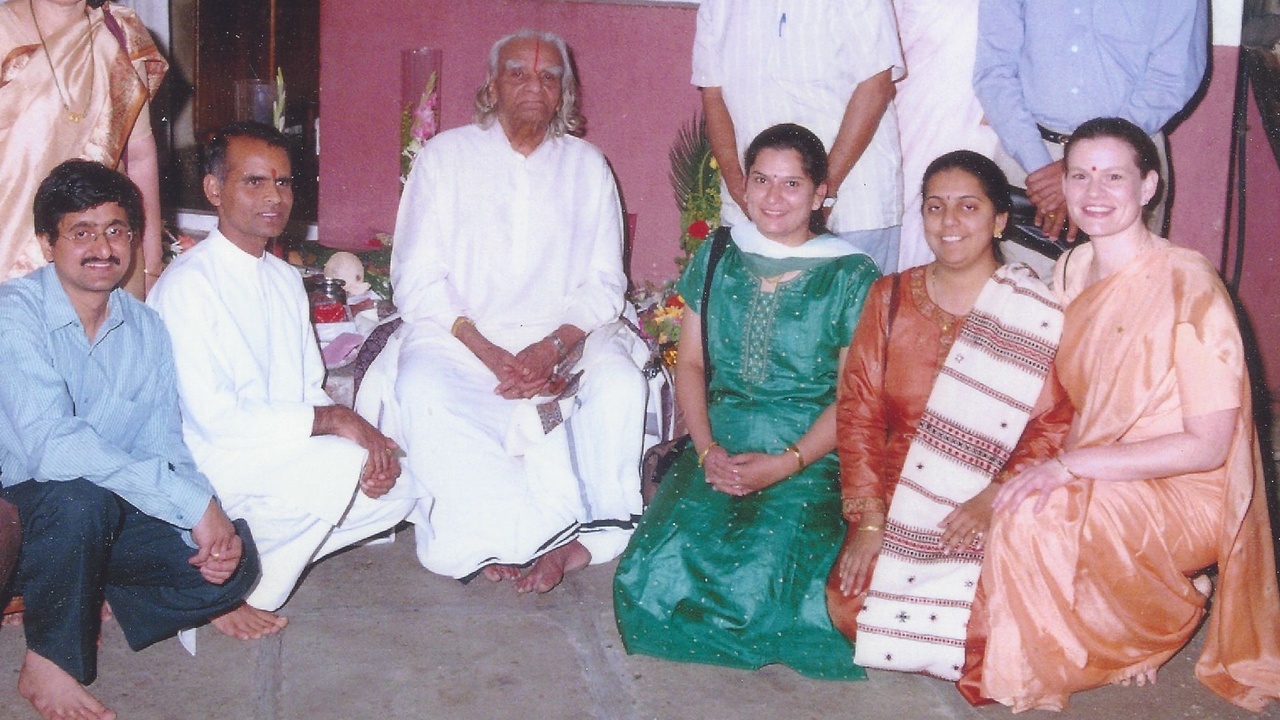The Yoga of Listening, Part 1 - Listening to Others
Jun 29, 2022
It all started more than 20 years ago, when B.K.S. Iyengar was instructing Triangle pose. He stood on my mat and roared, “You want to learn yoga, but you don’t even know how to listen!”
This began an ongoing inquiry into the nature and importance of listening in yoga and asking questions like: What does it really mean to listen? How do you do it? And what does listening have to do with learning yoga?
(If you’re interested in the story behind how I got to be on the receiving end of B.K.S. Iyengar’s ire, one of my most treasured and thrilling experiences in yoga - read this post. The photo above was taken during a celebration at the Ramamani Iyengar Memorial Yoga Institute in Pune, India in 2001.)
Listening didn’t always come naturally for me. It wasn’t a skill I was raised with. I grew up in a boisterous Ashkenazi Jewish household where interrupting and talking over another person to make your point were more the norm than respectfully listening. So, it was pretty mind-blowing when I read this quote that my first yoga teacher included in our teacher training manual:
Listening is a rare happening among human beings. You cannot listen to the word another is speaking if you are preoccupied with your appearance, or with impressing the other, or are trying to decide what you are going to say when the other stops talking, or are debating about whether what is being said is true or relevant or agreeable.… Listening is a primitive act of love in which a person gives himself to another’s word, making himself accessible and vulnerable to that word.
― William Stringfellow, Count It All Joy
Reading about listening as a form of generous, loving, and genuine connection made so much sense! It felt especially powerful in light of what I was learning about being present and attentive to myself in yoga practice and to my students as a teacher.
I realized that true listening was a skill I could foster to convey respect to others and offer them the gift of feeling affirmed and fully seen.
Since that incident with BKS Iyengar more than 20 years ago, I’ve considered conscious listening to be part of my yoga practice. I’ve learned that it requires humility and open-mindedness, and an awareness of the biases, judgements, and assumptions that can get in the way. It takes a willingness to set aside your own agenda to really be able to hear what another person is actually saying.
Here’s a 3-step technique that I use to practice the “yoga of listening” that’s informed by my experiences in meditation. It’s served me well as another way to bridge my yoga practice with real life:
- I make the intention to be fully present and attentive to the other person’s words.
- I make myself as comfortable as possible, given the setting, by softening any physical tension I notice and becoming aware of my breathing. It might seem counterintuitive to practice listening to another person by first focusing on yourself. But what I find is that when my body feels at ease and I am connected to my breath, it is much easier and more enjoyable to give the other person my full attention.
- During the interaction, I become aware of the back of my body and relax the muscles behind my eyes. I become aware of my peripheral vision, like a camera lens zooming out to capture a broader scene that includes myself and the other person. I am still fully attentive to the words being spoken and actively engaged in the conversation. At the same time, I hold the awareness that our exchange is taking place within a larger perspective.
Making the intention, getting comfortable, and then “zooming out” helps me to stay fully present to the words being spoken. I can also more easily notice when my mind is wandering off or when my own biases and assumptions get in the way of hearing what the other person is saying.
I find I am better able to maintain a sense of equanimity during difficult conversations and respond with kindness even when I might not agree with the words being spoken or the opinions being expressed.
